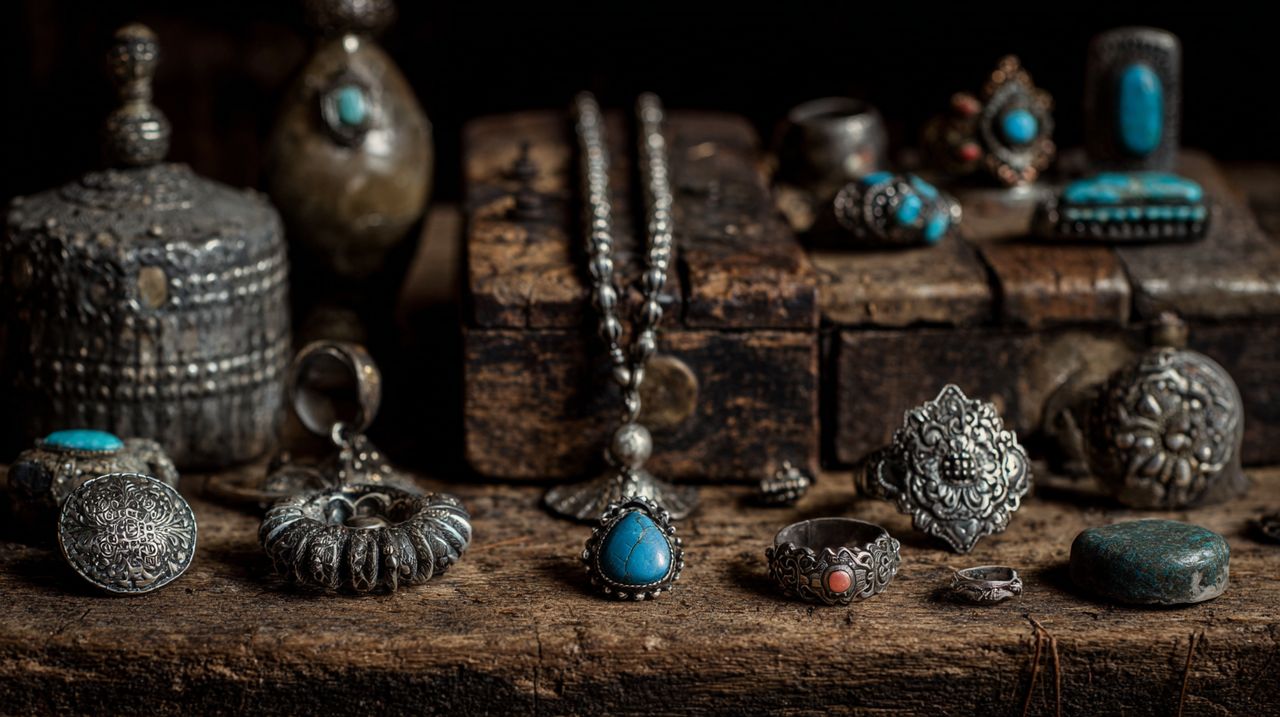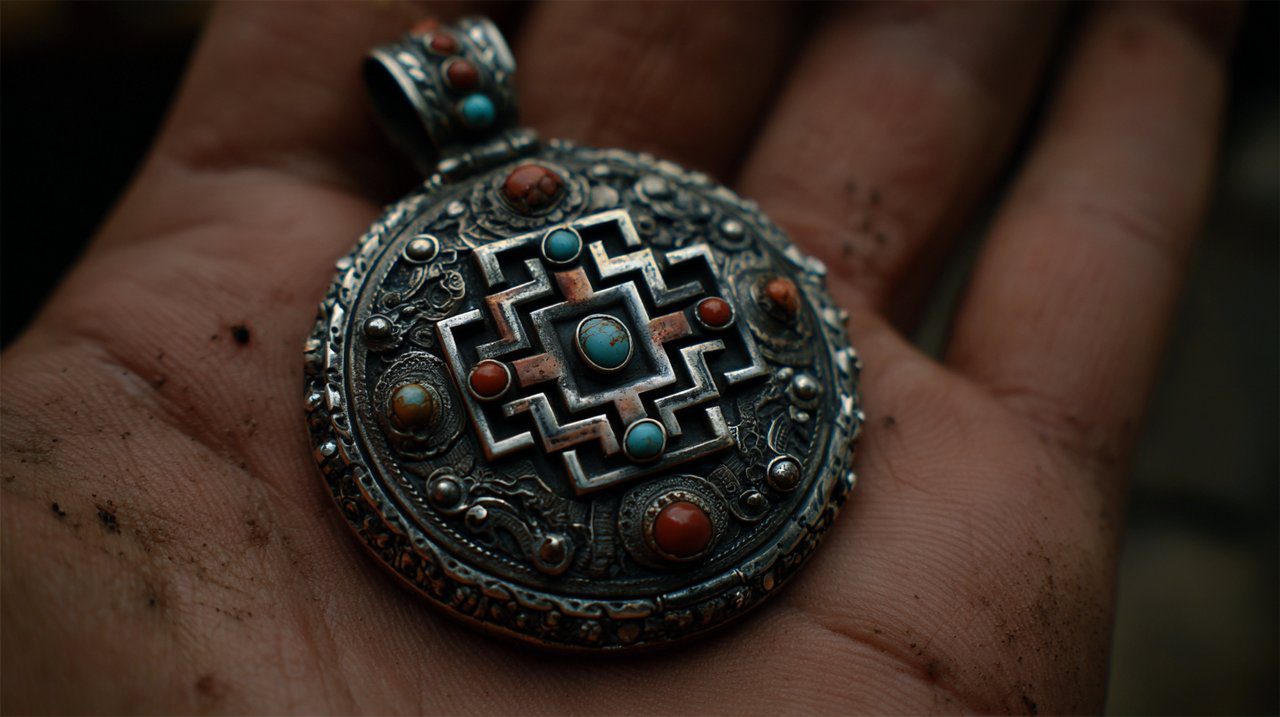Tibetan Silver: Demystifying Its True Nature and Profound Cultural Significance
The very phrase ‘Tibetan silver’ conjures images of ancient mystique and spiritual purity, as if imbued with the soul of the Himalayas itself. Yet, like many culturally rich artifacts, the reality behind this captivating material is often far more nuanced than common perception allows. Our journey into its essence will transcend superficial notions, revealing not just its true metallurgical identity, but the profound cultural narratives woven into its very being. Often, this material is found in stunning examples of Tibetan jewelry.

The Great Demystification: What Is Tibetan Silver, Really?
Dispelling the "Pure Silver" Myth
Perhaps the most persistent misconception regarding ‘Tibetan silver’ is the notion that it represents a form of pure silver. This is, unequivocally, a fundamental inaccuracy. Both historically and in contemporary practice, Tibetan silver is not elemental silver, but rather a carefully crafted alloy. Its enduring appeal derives less from its chemical purity and more from its aesthetic qualities and the profound cultural tapestry it embodies. This common misunderstanding often finds its roots in the material’s antique luster, the traditional craftsmanship it showcases, and, regrettably, occasional commercial misrepresentation.
Common Alloy Compositions
So, what then is its true nature? Authentic Tibetan silver is, in essence, a white metal alloy meticulously formulated to replicate the appearance and tactile sensation of aged silver. While its precise composition can exhibit considerable variation, it commonly incorporates a blend of copper, nickel, and zinc. Occasionally, one might also find trace amounts of tin or other metals. Each of these constituent elements plays a distinct and crucial role in the alloy’s final characteristics:
- Copper: Provides durability and a warm undertone, often responsible for the reddish patina seen on older pieces.
- Nickel: Imparts a bright, silvery-white color and hardness, enhancing wear resistance.
- Zinc: Lowers the melting point, making the alloy easier to cast and work with.
This intentional alloying process imbues the material with significantly greater durability and workability than pure silver, which is inherently soft and malleable. The choice of such an alloy was often a pragmatic decision, empowering artisans to fashion intricate, resilient pieces for both personal adornment and practical, daily use.
A Canvas of Culture: Tibetan Silver’s Artistic and Spiritual Legacy
Symbolism and Sacred Motifs
Moving beyond its material composition, we encounter the profound spiritual dimension of Tibetan silver. Far from being mere ornamentation, these objects function as rich tapestries woven with layers of symbolism. The motifs, whether intricately etched, hammered, or meticulously set, are inextricably linked to Tibetan Buddhism and its vibrant cosmology. Among the most frequently encountered symbols are:
- The Eight Auspicious Symbols (Tashi Tagye): Such as the Endless Knot, Lotus, Dharma Wheel, and Victory Banner, each representing aspects of Buddhist teachings and good fortune.
- Vajra (Dorje): A thunderbolt scepter, symbolizing indestructible power and spiritual authority.
- Lotus Flower: Represents purity, spiritual awakening, and compassion, rising untainted from muddy waters.
These designs are, unequivocally, not arbitrary embellishments. Instead, they serve as visual prayers, potent mnemonic devices, and conduits for spiritual energy, eloquently reflecting the Tibetan people’s profound worldview and their deeply rooted devotional practices.
Craftsmanship and Traditional Techniques
The enduring beauty of Tibetan silver is further amplified by the extraordinary craftsmanship that defines its creation. Each piece stands as a testament to generations of honed artisanal skill, where traditional methods consistently prioritize handcraftsmanship, thereby imbuing every item with a distinct and unique character. This includes intricate works like a Tibetan necklace or a Tibetan ring. The techniques most commonly employed in this intricate artistry include:
- Hammering and Repoussé: Shaping the metal by hammering from the reverse side to create raised designs.
- Chasing and Engraving: Detailing designs on the front surface with specialized tools.
- Filigree and Granulation: Delicate wirework and tiny metal beads used for intricate ornamentation.
- Inlay and Stone Setting: Incorporating natural stones like turquoise, coral, and lapis lazuli, often chosen for their symbolic colors and perceived protective qualities.

Indeed, much like a seasoned storyteller meticulously weaves complex narrative threads, Tibetan artisans seamlessly fuse their spiritual faith and mastery into each creation. Consequently, every piece transcends its material form to become a tangible narrative—a flowing history profoundly shaped by devoted hands.
Beyond Ornament: The Role of Tibetan Silver in Daily Life and Ritual
Utilitarian Objects and Adornments
Beyond its artistic and symbolic dimensions, Tibetan silver is deeply integrated into the very fabric of daily life within Tibetan culture. It extends far beyond mere personal adornment, becoming an intrinsic component of both individual identity and the domestic environment. Consider, for instance, elaborate tea bowls, intricate snuff bottles, robust belt buckles, delicate hair ornaments, and a myriad of domestic utensils. These items, while serving practical functions, simultaneously convey profound messages of status, accumulated wealth, and unwavering cultural identity. A finely crafted tea bowl, for example, might not only be a daily vessel but a cherished family heirloom, echoing generations of untold stories.
Ceremonial Use and Protective Amulets
More critically, the alloy assumes a pivotal role in religious ceremonies and as potent protective talismans. One often finds ritual objects—such as prayer wheels, butter lamp holders, and various implements integral to monastic practices—meticulously fashioned from this very material. Personal amulets, notably the Gau (a small, portable shrine often worn around the neck), are frequently crafted from Tibetan silver, safeguarding sacred relics or prayers within. These objects are not merely decorative; they are profoundly believed to confer protection, invoke blessings, and facilitate a tangible connection to the divine, serving as powerful anchors for faith and tradition. Tibetan dzi beads, for instance, are often incorporated into such amulets or necklaces for their protective qualities.
Collecting and Caring for Authentic Pieces
Identifying Genuine Tibetan Silver
For those venturing into the acquisition of Tibetan silver, a discerning eye is paramount. While authentic pieces unequivocally do not consist of pure silver, they nonetheless exhibit a suite of distinct characteristics that serve as reliable indicators. When evaluating an item, consider the following:
- Weight: Often surprisingly substantial, a direct consequence of the alloy’s inherent density.
- Patina: Authentic pieces, particularly those with age, will invariably develop a natural, often nuanced and uneven, oxidation or patina over time, ranging in hue from deep grey to subtle greenish tones.
- Craftsmanship: Look for the hallmarks of genuine hand-worked details, subtle imperfections that speak to human touch, and the consistent presence of traditional motifs. Conversely, be wary of overly uniform, mass-produced items, which often lack this intrinsic character.
- Sound: When gently tapped, a genuine piece will typically produce a duller, less resonant sound compared to pure silver.
- Smell: Certain alloys, especially those with a higher copper content, may emit a faint, yet discernible, metallic scent.
It is crucial to approach any item marketed as "pure Tibetan silver" with extreme caution, as this descriptor is fundamentally a misnomer. The key to authentic acquisition lies in diligent research of reputable dealers and a comprehensive understanding of the material’s true metallurgical and cultural nature.
Preservation Tips for Longevity
Preserving the inherent beauty and profound cultural value of your Tibetan silver pieces necessitates thoughtful care. While the alloy is generally robust, adherence to proper maintenance practices is essential for their longevity:
- Cleaning: For routine cleaning, a soft cloth with mild soap and water suffices. Should a deeper clean be required, a non-abrasive silver polishing cloth can be employed; however, always avoid harsh chemical cleaners, which risk damaging delicate inlays or stripping away desirable patinas.
- Storage: Store pieces in a dry environment, ideally within an airtight bag or box, to mitigate oxidation. Direct sunlight and extreme temperatures should be avoided.
- Handling: Handle with clean hands to prevent skin oils from accelerating tarnish. Paradoxically, regular wear can also contribute to maintaining its luster by gently polishing the surface through friction.
Thus, we return to our initial inquiry: the true essence of ‘Tibetan silver.’ It is, we now understand, far more than a simple imitation or a substitute for a precious metal. Instead, it stands as a profound embodiment of the Tibetan people’s enduring wisdom, their exquisite artistry, and their unwavering devotion. Its intrinsic value resides not in the elemental purity of its composition, but in the compelling narratives it silently conveys, the ancestral traditions it meticulously upholds, and the boundless spiritual depth it encapsulates. By embracing this authentic understanding, we move beyond superficial judgments and truly apprehend the profound beauty inherent in this unique cultural treasure. Whether one approaches it as a discerning collector, a dedicated cultural enthusiast, or simply as an individual drawn to the mysterious allure of Eastern traditions, a deeper engagement with authentic Tibetan silver craftsmanship offers an unparalleled portal into the rich history and profound spiritual world of Tibet.
💡 Frequently Asked Questions
Tibetan silver is an alloy, not pure elemental silver. It is a white metal alloy meticulously crafted to replicate the appearance and tactile sensation of aged silver.
Authentic Tibetan silver is an alloy primarily composed of copper, nickel, and zinc. Occasionally, it might also include trace amounts of tin or other metals.
Tibetan silver holds profound cultural and spiritual significance, serving as more than mere ornamentation. Its motifs are deeply linked to Tibetan Buddhism, functioning as visual prayers and symbols. It is also integrated into daily life for utilitarian objects and plays a critical role in religious ceremonies and as protective talismans.
To identify genuine Tibetan silver, look for substantial weight, a natural and often uneven patina, and the hallmarks of hand-worked craftsmanship. Genuine pieces typically produce a duller sound when tapped and may have a faint metallic scent. It is crucial to be cautious of any items marketed as 'pure Tibetan silver' as this is a misnomer.







